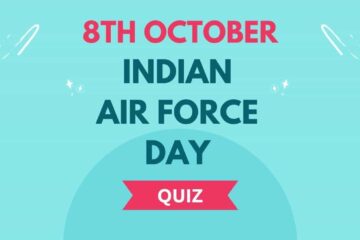Are you a space enthusiast? Do you want to learn more about India’s first solar mission, Aditya L1? Then take our Aditya L1 quiz! This quiz will test your knowledge of the mission’s objectives, payloads, and launch schedule. So what are you waiting for? Take the quiz today!
Aditya L1 Quiz Questions and Answers
Question 1: What does “Aditya-L1” stand for?
A. Advanced Solar Satellite
B. Aditya Lagrangian point 1
C. Astro-Sun Exploration Mission
D. Aditya Low-Orbit Satellite
Correct Answer: B
Question 2: Which organization is leading the Aditya-L1 mission?
A. NASA
B. ISRO
C. ESA
D. Roscosmos
Correct Answer: B
Question 3: What is the launch date of the Aditya-L1 mission?
A. 2 September 2023
B. 1 August 2023
C. 15 October 2023
D. 30 November 2023
Correct Answer: A
Attempt Chandrayaan 3 Quiz
Question 4: What is the primary objective of the Aditya-L1 mission?
A. Studying Mars
B. Studying Earth’s oceans
C. Studying the Sun
D. Studying comets
Correct Answer: C
Question 5: In which type of orbit will the Aditya-L1 spacecraft be placed?
A. Geostationary orbit
B. Low Earth orbit
C. Halo orbit
D. Polar orbit
Correct Answer: C
Question 6: What is the planned mission duration of Aditya-L1?
A. 2 years
B. 5.2 years
C. 10 years
D. 1 year
Correct Answer: B
Question 7: Which rocket will launch the Aditya-L1 mission?
A. GSLV Mk III
B. PSLV-C57
C. Ariane 5
D. Falcon 9
Correct Answer: B
Question 8: What is the reference system for Aditya-L1’s orbit?
A. Sun–Mars L1
B. Sun–Earth L1
C. Earth–Moon L1
D. Sun–Venus L1
Correct Answer: B
Question 9: What is the payload mass of the Aditya-L1 spacecraft?
A. 100 kg
B. 244 kg
C. 500 kg
D. 750 kg
Correct Answer: B
Question 10: What is the primary instrument for studying the Sun’s corona in the Aditya-L1 mission?
A. Visible Emission Line Coronagraph (VELC)
B. Plasma Analyser Package for Aditya (PAPA)
C. Solar Ultraviolet Imaging Telescope (SUIT)
D. Advanced Tri-axial High-Resolution Digital Magnetometer
Correct Answer: A
Question 11: Which Indian spaceport will host the launch of Aditya-L1?
A. Thumba Equatorial Rocket Launching Station
B. Sriharikota
C. Bengaluru Space Research Center
D. Kourou Spaceport
Correct Answer: B
Question 12: What is the primary focus of Aditya-L1’s observations?
A. Studying asteroids
B. Studying black holes
C. Studying the Sun
D. Studying Jupiter’s moons
Correct Answer: C
Question 13: What is the specific advantage of placing a satellite in a halo orbit around Lagrangian point 1 (L1)?
A. It provides a clear view of Earth.
B. It allows continuous observation of the Sun without interruptions.
C. It enables close observations of Mars.
D. It provides access to Jupiter’s magnetic field.
Correct Answer: B
Question 14: What is the budget of the Aditya-L1 mission (excluding launch costs)?
A. Rs. 100 crore
B. Rs. 378.53 crore
C. Rs. 500 crore
D. Rs. 1,000 crore
Correct Answer: B
Question 15: In which language does “Aditya L1” mean “Sun L1”?
A. Hindi
B. Tamil
C. Sanskrit
D. Telugu
Correct Answer: A
Question 16: Which institute is responsible for developing the scientific payloads of Aditya-L1?
A. NASA
B. ESA
C. Indian Institute of Astrophysics (IIA)
D. Roscosmos
Correct Answer: C
Question 17: What is the launch vehicle for the Aditya-L1 mission?
A. GSLV Mk III
B. PSLV-XL(C57)
C. Ariane 5
D. Falcon 9
Correct Answer: B
Question 18: How far is Lagrangian point 1 (L1) from Earth?
A. Approximately 1.5 million kilometres
B. Approximately 100,000 kilometres
C. Approximately 10 million kilometres
D. Approximately 500,000 kilometers
Correct Answer: A
Question 19: What will Aditya-L1 continuously observe without interruptions?
A. Earth’s magnetic field
B. The Moon’s surface
C. The Sun
D. Jupiter’s Great Red Spot
Correct Answer: C
Question 20: What is the primary scientific goal of the Aditya-L1 mission?
A. Studying Earth’s climate
B. Understanding the origin of comets
C. Investigating the Sun’s behaviour and its impact on space weather
D. Observing distant galaxies
Correct Answer: C
Question 21: What is the primary focus of the Aditya-L1 mission’s observations?
A. Studying asteroids
B. Studying black holes
C. Studying the Moon’s surface
D. Studying the Sun’s atmosphere
Correct Answer: D
Question 22: What is the primary instrument for studying the Sun’s magnetic fields in the Aditya-L1 mission?
A. Solar Ultraviolet Imaging Telescope (SUIT)
B. High Energy L1 Orbiting X-ray Spectrometer (HEL1OS)
C. Magnetometer
D. Plasma Analyser Package for Aditya (PAPA)
Correct Answer: C
Question 23: Which Lagrange point is Aditya-L1 placed in orbit around?
A. Lagrange Point 2 (L2)
B. Lagrange Point 3 (L3)
C. Lagrange Point 4 (L4)
D. Lagrange Point 1 (L1)
Correct Answer: D
Question 24: What is the significance of studying the Sun’s dynamics?
A. Understanding Earth’s climate
B. Predicting asteroid impacts
C. Advancing solar power technology
D. Predicting space weather and its impact on Earth
Correct Answer: D
Question 25: Which type of rocket will launch the Aditya-L1 mission?
A. GSLV Mk III
B. Falcon 9
C. Soyuz
D. Delta IV
Correct Answer: A
Question 26: What is the total travel time from launch to reaching Lagrange Point 1 (L1) for Aditya-L1?
A. 2 months
B. 6 months
C. 4 months
D. 8 months
Correct Answer: C
Question 27: What will the Advanced Tri-axial High-Resolution Digital Magnetometers measure?
A. Temperature of the Sun’s corona
B. Magnetic fields within the solar corona
C. Solar wind particles
D. Solar flare frequencies
Correct Answer: B
Question 28: What type of orbit will the Aditya-L1 spacecraft initially be placed in before reaching L1?
A. Geosynchronous orbit
B. Polar orbit
C. Low Earth orbit
D. Elliptical orbit
Correct Answer: C
Question 29: How many images per day can the Visible Emission Line Coronagraph (VELC) send to the ground station?
A. 100 images
B. 440 images
C. 1,000 images
D. 1,440 images
Correct Answer: D
Question 30: What is the primary goal of studying Coronal Mass Ejections (CMEs) in the Aditya-L1 mission?
A. Predicting solar flares
B. Understanding the origin of comets
C. Studying asteroid impacts
D. Understanding solar eruptive events
Correct Answer: D
Question 31: What does “ISRO” stand for?
A. Indian Space Research Organization
B. International Space and Research Organization
C. Indian Satellite and Rocket Organization
D. International Solar Research Organization
Correct Answer: A
Question 32: In what language does “Aditya” mean “Sun”?
A. Russian
B. Sanskrit
C. Chinese
D. Spanish
Correct Answer: B
Question 33: What is the primary focus of Aditya-L1’s instruments?
A. Studying outer space black holes
B. Observing distant galaxies
C. Studying the Sun’s corona and chromosphere
D. Studying Earth’s oceans
Correct Answer: C
Question 34: What is the launch site for the Aditya-L1 mission?
A. Kourou Spaceport
B. Satish Dhawan Space Centre
C. Kennedy Space Center
D. Baikonur Cosmodrome
Correct Answer: B
Question 35: Which region of the Sun’s atmosphere will Aditya-L1 primarily investigate?
A. Photosphere
B. Exosphere
C. Thermosphere
D. Mesosphere
Correct Answer: A
Question 36: What is the primary purpose of studying the Sun’s magnetic fields in the Aditya-L1 mission?
A. Predicting solar flares
B. Studying distant galaxies
C. Understanding Earth’s climate
D. Understanding space weather
Correct Answer: D
Question 37: Which instrument in the Aditya-L1 mission focuses on observing solar wind particles?
A. Plasma Analyser Package for Aditya (PAPA)
B. High Energy L1 Orbiting X-ray Spectrometer (HEL1OS)
C. Solar Low Energy X-ray Spectrometer (SoLEXS)
D. Visible Emission Line Coronagraph (VELC)
Correct Answer: A
Question 38: What is the primary scientific goal of Aditya-L1’s observations?
A. Understanding the Moon’s surface
B. Studying distant galaxies
C. Investigating the Sun’s behaviour and its impact on space weather
D. Studying Earth’s climate
Correct Answer: C
Question 39: How far is Lagrangian point 2 (L2) from Earth?
A. Approximately 100,000 kilometres
B. Approximately 1.5 million kilometres
C. Approximately 10 million kilometres
D. Approximately 500,000 kilometers
Correct Answer: C
Question 40: Which organization is not involved in the development of Aditya-L1’s scientific instruments?
A. ISRO
B. IUCAA
C. NASA
D. IIA
Correct Answer: C



0 Comments